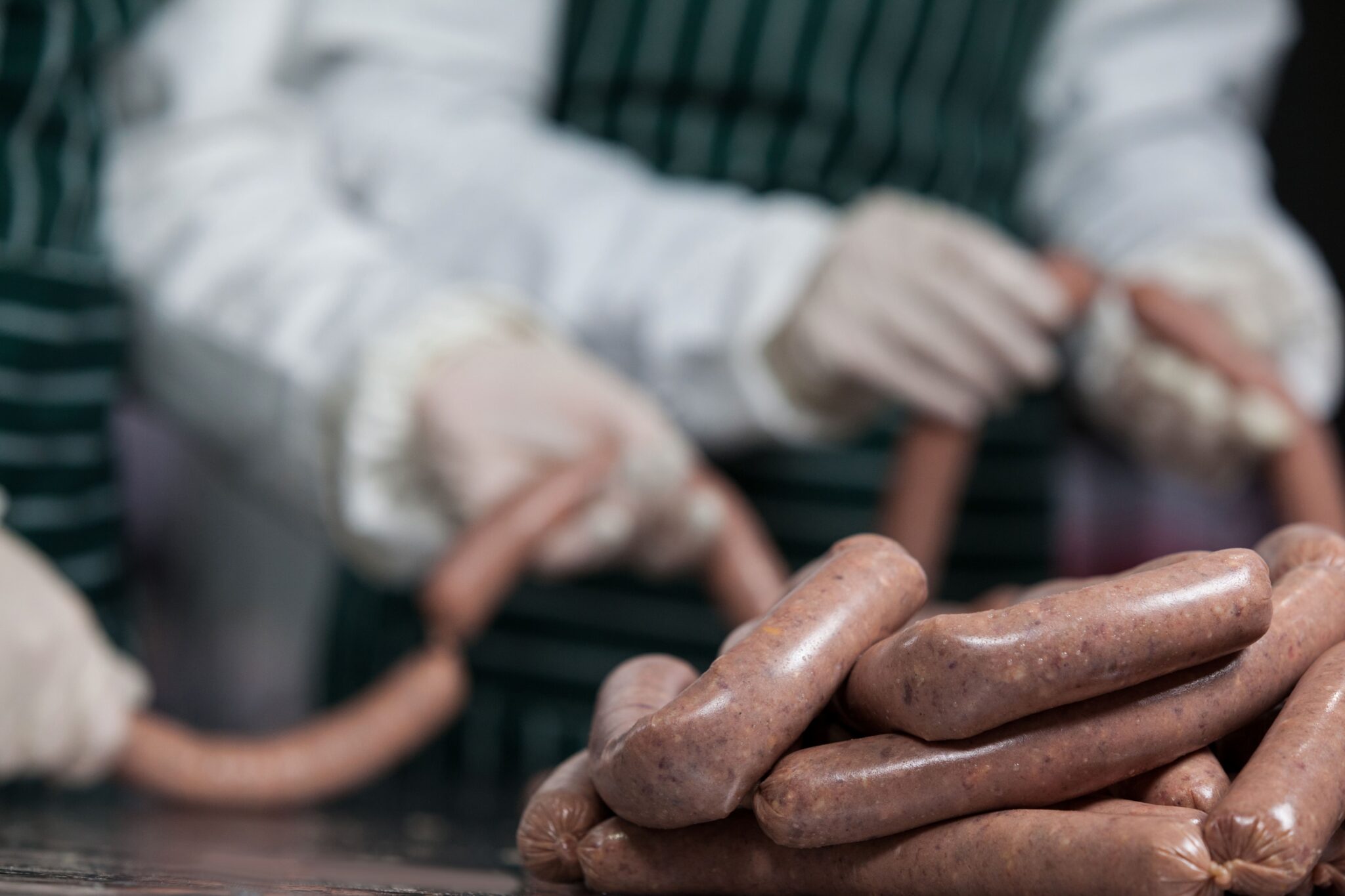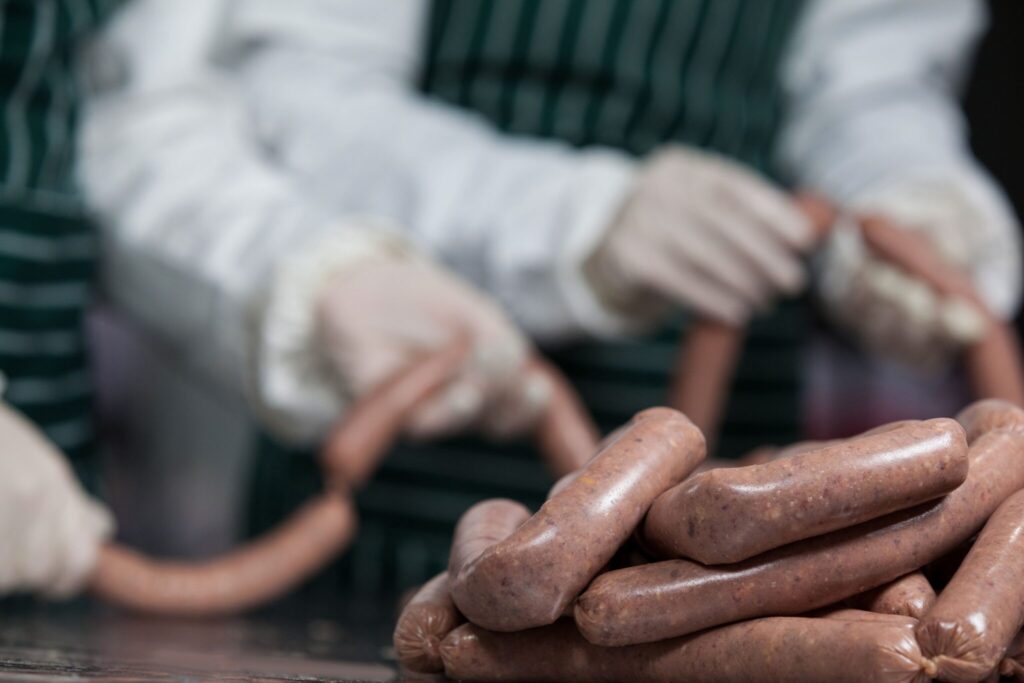
-
2025-03-13
- 0 Comment
Hygiene in Meat and Meat Product Production
The production of meat products requires adherence to the highest hygiene standards. The risk of food contamination by microbiological, physical, or chemical factors makes it essential to follow established procedures. These procedures must align with the guidelines of Good Hygiene Practice (GHP) and Good Manufacturing Practice (GMP), which form the foundation for complying with the mandatory HACCP system (Hazard Analysis and Critical Control Points). This system involves continuous analysis of all potential hazards to the produced food and minimizing them. It also involves identifying critical stages in the production process, where preventing contamination should be an inseparable part of the operations.
For meat producers, ensuring the delivery of a safe product with a clearly marked shelf life is a priority. Contaminated products reaching store shelves pose a serious health and even life-threatening risk. Therefore, every employee involved in the processing should have the appropriate knowledge regarding food safety and adhere to the required procedures in accordance with legislation.

Maintaining Cleanliness in Meat Processing Plants
In the food industry, maintaining a high level of hygiene is always a priority. Personnel ensure that production lines are protected from chemical, physical, or microbiological contamination. However, in the case of meat products and their derivatives, microbiological contamination poses the greatest threat to food quality and consumer health. These contaminants are invisible to the naked eye, making them difficult to identify. However, employees can effectively prevent them. The design of the plant plays a significant role in this process. It is crucial to ensure that all surfaces are smooth and hydrophobic. Low roughness facilitates cleaning and disinfection processes. It also prevents contaminants from adhering strongly, which could extend the cleaning time.
Cleaning and disinfection processes should rely on comprehensive solutions and innovative tools. Centralized foam cleaning systems ensure maximum efficiency and are extremely convenient for personnel. The application of the right pressure and a precisely measured amount of cleaning agent effectively removes dirt and disinfects the cleaned surfaces. It is also common in meat processing plants to install systems that use water from the network. These solutions, supported by additional accessories like hose reels or low-pressure guns, help simplify cleaning processes and ensure the highest hygiene standards for surfaces.
Production hall equipment must be tailored to the specific requirements of meat processing plants. Stainless steel equipment demonstrates the best properties when in contact with food and under the harsh conditions of production halls. It is resistant to mechanical factors, does not affect the taste or smell of the food, and does not react chemically with it, enabling smooth production processes.
Hygiene in Meat Processing
Employees working with animal products are particularly vulnerable to dangerous microorganisms. Therefore, employers must ensure that the procedures implemented in the plant also safeguard the safety of personnel. This requires providing an adequate number of dispensers with protective clothing, which is crucial for preventing contamination of the food and protecting workers from becoming soiled. Employees should also be trained before starting work on how to properly put on protective clothing to ensure it serves its purpose. Regular cleaning of the production area is a cornerstone of maintaining proper working conditions and ensuring food safety. It is also essential that employees involved in cleaning and disinfection processes are equipped with waterproof clothing.
Sanitary entrances separate production areas from other parts of the plant. These should be equipped with elements tailored to the specific needs of the plant and employees. To minimize the transfer of contaminants, the space should include shoe washers with rotating brushes and hand cleaning and disinfection stations. The installation of disinfectant mats minimizes the risk of transferring bacterial flora to areas requiring special microbiological protection.
Control of Cleanliness in Slaughterhouses and Butcheries
In meat processing plants, cleaning and disinfection processes are crucial for ensuring the safety of the final product. Production lines must be cleaned using appropriate chemical agents. Additionally, allergens are often used in meat products, so personnel responsible for maintaining high hygiene standards should be properly trained and always follow established procedures to prevent cross-contamination. Since microbiological contamination is difficult to detect, microbiological tests should be performed as part of the cleaning and disinfection control. This ensures that production can resume safely on cleaned lines. It is important to thoroughly inspect the entire machinery, including hard-to-reach areas.
Even modern production lines can pose a potential risk to food safety. Some parts, particularly smaller components connecting larger subassemblies, can loosen and end up in the product. Therefore, metal detectors should be an integral part of modern production lines. These devices continuously scan the produced food and alert the personnel whenever an anomaly is detected. For this reason, tools and accessories used in the production area should be easily detectable.
